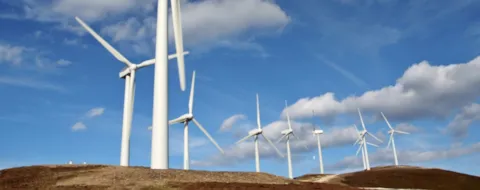The Irish wind industry looks forward to 2030
The theme of the recent IWEA (Irish Wind Energy Association) Autumn conference was a positive one; “delivering 70 by 30.” This relates to the recent target outlined in the Irish government’s 2019 Climate Action Plan where 70% of electricity will be generated from renewable sources by 2030. IWEA were keen to point out the vast opportunities available to the wind industry with installed capacity of onshore wind expected to more than double over the next decade from 3,800 MW to 8.2 GW. There’s also an additional 3.5 GW of offshore wind expected to be installed off the coast of Ireland by 2030.
The majority of this increased capacity will be supported by the new Renewable Energy Support Scheme (RESS). During the conference, the Department of Communications, Climate Action and Environment (DCCAE) confirmed that they were looking to issue the detailed design and commence the pre-qualification of RESS by December 2019, with the first RESS auction expected to take place in June 2020 and a project delivery date of December 2022. These timelines have slipped constantly over the last year but the DCCAE emphasised that further delays to the timeline are not expected. The renewable industry will wait for the detailed design with bated breath.
Subsequent presentations throughout the conference highlighted the challenges that the industry faces to meet the new installed wind capacity targets. In the area of planning, this included the new revision to the Wind Energy Development Guidelines (WEGs) which are expected by the end of the year. These guidelines will likely impose stricter noise requirements (including tonal penalties) and a larger turbine setback distance of four times the tip height. In an economic analysis presented at the conference, it was noted that the greatest gains to be made in lowering the levelised cost of energy (LCOE) was through using larger turbines with greater rotor diameter and tip heights. Therefore, the increased setback restrictions will act to impede LCOE improvements by limiting the potential turbine types which can be used at some sites. These new restrictions add to existing planning issues experienced with consenting timelines, environmental impact assessment (EIA), appropriate assessment (AA) requirements and grid connection permitting, all of which currently increase development timelines and costs.
Further presentations highlighted the ongoing challenges related to the increased business rates for onshore wind, how the new enduring grid connection processes would interact with both RESS timelines and offshore projects, the need for the planning of future transmission system upgrades now and how to deal with increased levels of wind curtailment due to higher penetration levels of renewable energy.
Despite all these challenges the mood at the conference was generally positive. The industry has a set of ambitious targets to meet which can allow renewable energy developers to progress long-term plans. Climate action is at the forefront of everyone’s mind, especially the Irish government and its departments. There seems to be an impetus to work together in collaboration to overcome these challenges and achieve these targets.
The message from the Irish wind industry is clear, we are ready to achieve 70% renewable energy by 2030, so let’s work together to achieve it!
11/5/2019 9:00:00 AM
